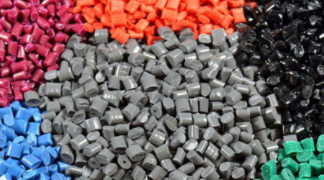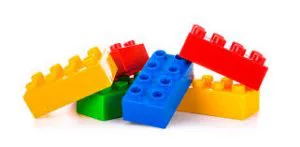ABS (acrylonitrile butadiene styrene) is a general thermoplastic engineering plastic developed in the 1940s. It not only has good rigidity, hardness, and processing fluidity but also has high toughness, which can be used for injection molding, extrusion, or thermoforming. Generally speaking, automobile, appliance and an electronic appliance are three application fields of ABS resin. What do you know about ABS and ABS injection molding? Today, at moldplasticinjection.com, we are showing you what is ABS and ABS Injection Molding, as well as the application and advantages of ABS.

What Is ABS (Acrylonitrile Butadiene Styrene)?
ABS is a ternary copolymer of three monomers, the relative content of three monomers can be changed arbitrarily to make various resins. A makes it resistant to chemical corrosion and heat resistance, and has certain surface hardness. B makes it have high elasticity and toughness. S makes it have the processing and forming characteristics of thermoplastic and improves the electrical properties.
Generally, heat resistant ABS resin will absorb the moisture in the air during storage and transportation. The water absorption rate varies with the air humidity, generally between 0.2 and 0.4%. Therefore, the material must be fully dried to reduce the moisture content to below 0.05%, preferably below 0.02%, otherwise, the surface defects such as water flower and silver silk can occur. The drying temperature of heat resistant ABS resin is higher than that of ordinary ABS, which is usually 80-95 ℃, and the drying time is 3-4 hours.
ABS Applications
ABS resin is the third-largest resin used in automobiles after polyurethane and polypropylene. ABS resin can be used for the interior and exterior shell of the vehicle, steering wheel, oil guide pipe, handle and button, etc. the exterior of the vehicle includes a front radiator grille and lamp cover. In addition, due to the good heat resistance of ABS resin, some new applications such as nozzle, storage box, instrument panel, and so on have been developed in recent years. ABS resin is generally used for large-scale appliances such as refrigerator, freezer, food box, small-scale appliances and food processing machines, vacuum cleaner, blower, sewing machine cover, indoor air conditioner, humidifier, etc. The electronic and electrical industry includes various office and consumer electronic appliances, which are widely used, including electronic data processor and office equipment. Consumer appliances include imaging equipment, audio equipment and magnetic medium memory.
ABS Advantages
It is light yellow granular or bead opaque resin, non-toxic, tasteless, low water absorption, with good comprehensive physical and mechanical properties, such as excellent electrical properties, wear resistance, dimensional stability, chemical resistance and surface gloss, and easy to process. It can also be used for spraying metal, electroplating, welding and bonding
What Is ABS (Acrylonitrile Butadiene Styrene) Injection Molding?
ABS was given a metal luster instead of metal. ABS Injection Molding is a great choice for manufacturing plastic products. Injection molding is the main molding method of ABS plastics. The forming of ABS injection molding mainly depends on six conditions:
1. Drying Of ABS Plastics
ABS plastic has high hygroscopicity and humidity sensitivity. Sufficient drying and preheating before processing can not only eliminate the bubbles, silver wire and other fireworks on the surface of parts caused by water vapor but also help to plasticize plastics and reduce the color spots and more on the surface of parts. The moisture content of ABS raw material should be controlled below 013%.
The drying conditions before injection molding are as follows: drying at 75-80 ℃ for 2-3 hours in winter, drying at 80-90 ℃ for 4-8 hours in rainy days in summer, and drying for 8-16 hours if the parts want to obtain good luster or the parts themselves are complex and the drying time is long. Due to the existence of micro water vapor, the fog spots on the surface of parts are often ignored.
2. Injection Temperature
The relationship between ABS temperature and melt viscosity is different from other amorphous plastics. When the melting temperature increases, the melting actually decreases a little, but once it reaches the plasticizing temperature (suitable processing temperature range, such as 220-250 ℃), if the temperature continues to rise blindly, it will lead to the thermal degradation of ABS with low heat resistance, which will increase the melt viscosity, make the injection molding more difficult, and reduce the mechanical properties of parts. Therefore, although the injection temperature of ABS is higher than that of polystyrene and other plastics, it can not have a relatively loose temperature rise range like the latter. The larger the temperature change, the more defects will be brought, such as welding, poor gloss, flash, die stacking, color change and so on.
3. Injection Pressure
The viscosity of ABS melt is higher than that of polystyrene or modified polystyrene, so the injection pressure is higher. Of course, not all ABS parts require high pressure. For small, simple and thick parts, a lower injection pressure can be used. In the injection process, the pressure in the cavity when the gate is closed often determines the surface quality of the workpiece and the degree of silver wire defects. If the pressure is too small, the plastic shrinkage is large, the chance of contact with the cavity surface is large, and the part surface atomization. If the pressure is too high, the friction between the plastic and the cavity surface is very strong, and it is easy to cause adhesion.
4. Jet Speed
ABS with medium injection speed has better effect. When the injection speed is too fast, the plastic is easy to scorch or release gaseous compounds, so there are some defects near the gate, such as welding, poor gloss, red plastic and so on. However, in the production of thin-walled complex parts, we must ensure that the injection speed is high enough, otherwise, it is difficult to fill.
5. Mold Temperature
The molding temperature of ABS is higher, and the mold temperature is also higher. Generally, the mold temperature is adjusted to 75-85 ℃. The temperature of the fixed die is 70-80 ℃ and that of the dynamic die is 50-60 ℃. Special heating should be considered when injecting large complex thin-walled parts. In order to shorten the production cycle and keep the mold temperature relatively stable, a cold bath, hot bath, or other mechanical setting methods can be used to compensate the time of the original cold fixed mold in the mold cavity after the parts are taken out.
6. Material Quantity Control
When ABS is injected into an ordinary injection molding machine, the injection volume is only 75% of the standard injection volume. In order to improve the quality, dimensional stability, surface gloss and color uniformity of the parts, the injection volume is required to be 50% of the calibrated injection volume.

